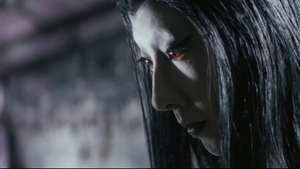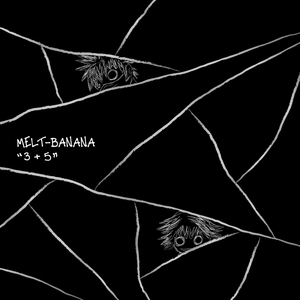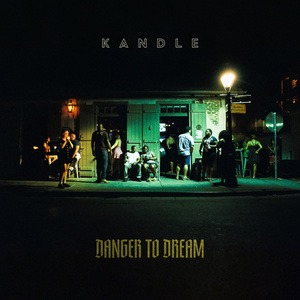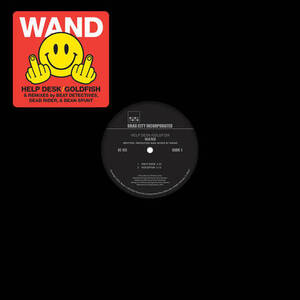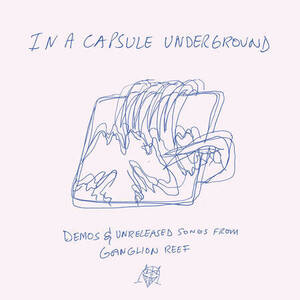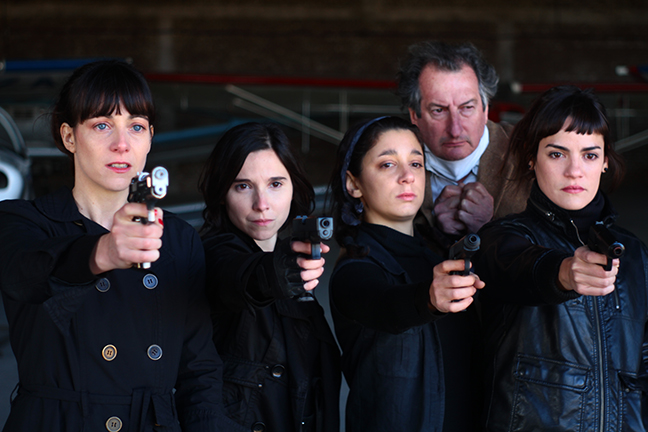
Best of Film 2019
by Generoso and Lily Fierro
As the decade draws to a close, we are seeing an influx of the hybrid documentary as a growing and necessary force driving cinema worldwide. 2019 saw many of our favorite features brilliantly combine elements of fiction with reality, which ultimately left the judgement of what is the truth to the personal interpretation of the viewer. Much to our delight, this year also saw a wider distribution of films from Central and South America to the United States, and this positive trend was key as it allowed us the opportunity to view and appreciate voices from regions that were woefully underrepresented in years past. Three features from South America made it to our lists this year including the film that sits at the top, La Flor, from Argentine director, Mariano Llinás.
What is now being considered as Canada’s Next Generation of filmmakers have time and time again impressed us throughout the year with young talents such as Kazik Radwanski and Sofia Bohdanowicz leading the way with features that are helping to define this growth of Canadian cinema. And last, but by no means least, our list this year includes exceptional films by two of the finest talents of the French New Wave, Jean-Luc Godard and Agnès Varda. We dedicate this list to Agnès who sadly left us in March of this year, but thankfully she left us a final goodbye in the form of a film that summed up her life and career unlike few closing statements that we have ever experienced. Thank you Agnès.
• •
1. The Flower (La Flor) / Argentina / dir. Mariano Llinás
One could argue that La Flor belongs on this list simply because of its grand scale. In fourteen hours, director Mariano Llinás gives us six chapters that each separately examine the role of fictional storytelling and the necessity of actresses in cinema. Could the exercise have been tedious? Absolutely. Could it have been completely pretentious and unwatchable? Of course. However, every second of La Flor is captivating, for Llinás embeds his analysis on the nature and future of fictional filmmaking into rich stories gorgeously helmed by his four lead actresses: Laura Paredes, Elisa Carricajo, Pilar Gamboa, and Valeria Correa. In doing so, we get to see kaleidoscopic performances from Paredes, Carricajo, Gamboa, and Correa as they flourish in a vast array of roles that demand something completely different from each other, and as a result, we understand the power of the actress as a muse for great creation and how this power can only manifest itself in fictional filmmaking. Much of this list consists of films that experiment with the lines between reality and fiction, and one of the chapters in La Flor does playfully examine Llinás’ own reality as the director of a massive film that required many years of dedication from his actresses, but overall, La Flor is a celebration of all that fiction can accomplish. It awes us. It underscores our fears. It makes us feel in an abstracted space away from our daily lives. It allows us to escape beyond the barriers of the self. And most importantly, it doesn’t lie to us, for it doesn’t pretend to be the truth, but it does hope to evoke true emotions. Our full review of La Flor is available here.
• •
2. Long Day’s Journey Into Night (Di qiu zui hou de ye wan) / China / dir. Bi Gan
In his impressive debut feature, Kaili Blues, Bi Gan told a story in two halves of a formerly incarcerated doctor who goes on a journey through the countryside of Guizhou in search of his nephew, who has been sold to a watchmaker. In that film, Gan conveys the meaning of the words in the Sutra he presents by defying the restrictions of time itself in the storytelling process, allowing for a freedom in movement and image to ascend past conventional narrative and structure. Like Kaili Blues, Gan Bi’s alluring and immensely enjoyable latest feature, Long Day’s Journey Into Night is also divided into two segments, with each distinctively challenging our understanding of time, narrative, and character to setup a contrast that dares us to unravel all of our notions of cinema, storytelling, memory, and experience. Through a pastiche of scenes that seem all too familiar, Gan playfully utilizes cinematic language primarily through tropes found in Hitchcock’s Vertigo that could be seen as homage, but serve more importantly as references that force us to draw from our memories of moments and characters in Vertigo and other film noirs so deeply embedded in our consciousness, to take us further away from the story that we are witnessing on our own, leading us to distort our interpretation of the main narrative with our recall of similar images and how they impacted us. As much as the first part of the Long Day’s Journey Into Night utilizes cinematic tropes and symbols, narrative construction, and memory recollection to assemble the characters’ disjointed realities, the second part of the film strips away all of that and becomes purely an experience, one that is languid and trance-like, but is perhaps the truest way that we navigate psychological representations assembled from reality, and in turn may be the way we interpret and understand reality itself. Whereas Godard’s recent film, The Image Book, addresses the failure of cinema to capture reality by using jarring images and sounds in an entirely experimental framework, Long Day’s Journey Into Night addresses this same problem with the contrast between the two parts of the film. Our full review of the film is available here.
• •
| **_3. The Tree House (Nhà cầy) / Singapore | Vietnam | Germany | France | China / dir. Quý Minh Trương_** |
Part naturalist documentary, part space diary, part discourse on ethnography, part thesis on the value of physical media, The Tree House (Nhà cầy) weaves stories about home from members of the HMong, Jarai, Ruc, and Kor people together with the reflections of a film director (portrayed by director Quý Minh Trương himself) on Mars in 2045 recalling his previous filming activities in Vietnam as he attempts to begin a new project documenting the red planet. In his film, Trương primarily focuses on Hậu Thị Cao, a Ruc woman who grew up in a remote cave system, and Lang Văn Hồ, a Kor man who grew up in a tree house deep in the jungle of Quảng Ngãi province. Both Ms. Cao and Mr. Hồ were displaced from their original homes by war or the ruling government, and in presenting their stories and memories of their original homes and their experiences of becoming outsiders in their own country, Trương opens up a line of questioning that first addresses the physical and mental representations of home as a concept, then naturally expands into the right to ownership of the physical, be it the home or the image, and then finally suggests the value of memory over the physical. By the end of The Tree House, Trương leaves us with many questions about the purpose of any attempt to document reality and the moral quandary of doing so in environments where we don’t belong, making us wonder about the purpose of his own work, yet forcing us to face our own tendency to document everything in our social media age and our desire to see into places far away where we have no investment, all of which lead us to fail to look and experience what’s in front of us and what’s in our own memories. Our full review of the film is available here.
• •
4. The Image Book (Le livre d’image) / France / dir. Jean-Luc Godard
As with Godard’s work over the last few decades, The Image Book is a montage piece, editing together concepts and created with a narrative, or rather the creator’s personal thoughts, that appear selected by the current era. We must gaze upon this work as an installation piece, gathering the combination of sounds and visuals as a combined form in a single viewing and releasing any sense (and expectation) of traditional film language, as it has been Godard’s goal to further the language of film past any sense of where we feel entirely comfortable viewing it. When experiencing Godard’s construction here, you see attempts to look at the ability of sound and image capturing and playback to actually freeze, perceive, and repeat reality, and without being pessimistic about the form, for this may be the director’s way of dismissing the medium, The Image Book’s primary concern is whether or not film is an appropriate conduit to capture reality. We understand that we experience what is real and recall what is real in desperate ways, and fundamentally, if cinema does the same, then it may be the closest way to show how we understand our world, even though that recollection, that attempt to recall the real may result in a falsehood. Fundamentally, the overwhelming success of The Image Book, as with most of Godard’s work throughout his career, comes primarily from the experiments attempted. Successful or not as these experiments may be, they operate within the structure of the film to create a unique cinematic language. With his 47th feature, Godard, through the daring exploration and manipulation of old and new visuals and sound, has been able to duly note and thoughtfully deconstruct the core facets of cinema in order to find paths for its continued evolution as a vital device for interpreting reality. Our full review of the film is available here.
• •
5. In Fabric / United Kingdom / dir. Peter Strickland
Two films in this year’s top ten share one thing: an obsession with the physicality of our humanness. Whereas Claire Denis’ High Life looks at humans in the lifelessness of space, Peter Strickland’s In Fabric looks at humans in the lifelessness of early-90s consumerist society before the emergence of e-commerce. Three working people fatally encounter a haunted red dress. The first is Sheila (Marianne Jean-Baptiste), whose work and home life allow her no place to be herself. At her workplace, a bank, her bosses watch and time her every move and call her into awkward meetings where they dig far too deeply into her personal life. Outside of work, she’s trying to bounce back from her divorce, and she’s trying to handle her son’s sexual exploits with an older woman in her home. Without many options to boost herself up, Sheila treats herself to a flattering red dress from the eerie department store Dentley and Soper’s during their January sales. Haunted by its past model, the dress leaves a bizarre rash on Sheila and eventually brings her misfortune before making its way to Reg (Leo Bill), a washing machine repairman. Reg is about to marry his childhood sweetheart, Babs (Hayley Squires), and on the night of his stag party, in order to break him from his usual mechanical facade, his friends force him to wear the red dress. When Reg brings the dress home, Babs takes a liking to it, and she is so amazed that she can fit a size 36 garment that she wears it back to Dentley and Soper’s in search of another dress in the same small size. As with any Peter Strickland film, cinematic references are abound in In Fabric, but underneath all of the stylish giallo references and the bizarre magical happenings inside of Dentley and Soper’s, there’s a bold examination of self-image and discomfort in human intimacy through clothing and the human residues of wear—fluids, skin, and hair. With In Fabric, Strickland dares you to think about all of the personal history, hope, and disappointments embedded in a piece of clothing, a realization that can be as terrifying as a haunted dress.
• •
| **_6. High Life / France | Germany | United Kingdom | Poland | United States / dir. Claire Denis_** |
One of the best forays into realistic science fiction since Jonathan Glazer’s 2013 film, Under the Skin, Claire Denis’ High Life strips away the extraordinary elements of space travel to look at how exploration of the universe and beyond will likely be used in the future. Harkening back to the science fiction approaches valuing experience over action in film in the decades before Star Wars, High Life avoids fantastic aliens, dynamic spaceships, and laser weaponry and presents a minimal, rectangular-prism spaceship occupied by death-row inmates who represent a diverse array of societal outsiders from multiple nations and who have agreed to take an experimental journey to a black hole to attempt to harvest energy in order to avoid further jail time and execution on Earth. However, the spaceship is its own kind of prison and death sentence even if there may be a tiny bit of hope in the discovery of a new world, and as a result, Denis presents very human reactions to the inmates’ predicament. Throughout High Life, she constantly reminds us of the physicality of the space crew. We see the importance of soil in the garden used to nourish and calm, and, we see a lot of blood and semen, the fluids of life that remain constant in their purpose and their influence on behaviors. Thus, we understand the characters’ motivations even if their setting is beyond ours (for now). With High Life, Denis warns and comforts us with the non-linear narrative following the survival of Monte (Robert Pattinson) and his daughter Willow (Scarlett Lindsay and Jessie Ross): Don’t be seduced by the newness and foreignness of space—it will have a real human impact driven by human tendencies toward violence, deception, and conquest that we’ve seen on Earth for centuries, and though this does sound grim, there is some hope, that hope that may seem foolhardy but one that has always been necessary for humans to survive against all odds.
• •
7. Ivana the Terrible (Ivana cea Groaznica) / Serbia / dir. Ivana Mladenović
In Ivana the Terrible, director, screenwriter, and actress Ivana Mladenović throws herself, her family, her friends, and her lovers into a semi-fictionalized account of the events of summer 2017. In real life, Mladenović—after seeing success from her debut film, Soldiers. Story From Ferentari, and from her role as the intriguing Solange in Radu Jude’s Scarred Hearts—experienced severe symptoms of stress and exhaustion, and in order to recuperate, she returned to her hometown of Kladovo in Serbia, and this return set the exposition for the film-version of Ivana, who has to try to heal up while becoming the central ambassador for the Serbian-Romanian Friendship Festival. Co-written with Adrian Schiop, who also co-wrote Soldiers. Story From Ferentari, Ivana the Terrible seamlessly blends fiction with emotions and memories from reality and features shining performances from Mladenović and her friend, the late Anca Pop. Claustrophobic, funny, and often uncomfortable, the film uses Ivana’s clashes and run-ins with everyone around her as the engine to study Kladovo, the relationship between Serbia and Romania, the desire to create and express through art, and the struggle to reconcile one’s identity upon leaving and returning to one’s home country. We had the opportunity to interview Ivana Mladenović at AFI Fest to discuss Ivana the Terrible. See here.
• •
8. Touch Me Not (Nu mă atinge-mă) / Romania / dir. Adina Pintilie
At the beginning of Touch Me Not, Romanian director, Adina Pintilie’s controversial 2018 Golden Bear winning film, Pintilie herself appears on a screen in front of a camera and asks the question, “Why haven’t you ever asked me what this film is about?” An essential question indeed, as the apparent documentary and fictional elements will soon purposefully merge into one another to raise fascinating questions about the veracity of the events that occur in the lives of the film’s main protagonists, Laura and Tómas, who will soon begin an intense, sometimes cathartic investigation of intimacy where they encounter people who challenge their understanding of the necessity and importance of touch, forcing Laura and Tómas to examine their pasts and how the attitudes of the people around them have impacted their perception of self. The core technique that director Pintilie so effectively utilizes in Touch Me Not is an intentional vagueness of the reality of our protagonists’ interactions for the purposes of examining intimacy without formal construction. Neither narrative nor documentary structures exist within the film to impede the solicitation of our feelings and reactions for what we are seeing on screen. Pintilie’s experimental and courageous approach to depicting intimate conversations and visuals rarely encountered in a non-exploitative manner has given us a much needed thought-provoking manipulation of the medium of film that we can use to examine ourselves and our own fears of how we are perceived by those around us. Our full review of Touch Me Not is available here.
• •
9. The Whistlers (La Gomera) / Romania / dir. Corneliu Porumboiu
Corneliu Porumboiu’s well-documented, longtime fascination with language culminates in his latest film, The Whistlers. To expand on Cristi, the protagonist of 2010’s Police, Adjective, Porumboiu places his detective in a drug ring operating alongside a corrupted law system; however, Cristi is less occupied by the interpretation of the Romanian language these days. Now, he is learning Silbo Gomero, a language composed entirely of whistling in order to undetectably communicate with his drug ring partners. But, Silbo Gomero is only one of the many types of languages in The Whistlers. In order to form his discourse on methods of communication, Porumboiu weaves together film noir conventions, his own cinematic language, and music into the crime drama plot of The Whistlers to create an experience that toys with our notions of how image and sound can tell a story, evoke an emotion, and modulate our expectations and reactions. Unlike Porumboiu’s previous analytical works, The Whistlers is a complete spectacle where all elements of film have a role to play. The heist storyline in The Whistlers anchors the film, fulfilling that need for plots that we tend to have, but the sensorial experiences prompted by the scenes and the accompanying words and sounds are the most important part, for they require us to be more diligent in how we watch the film, and they take away the responsibility of interpretation from Cristi and place it on us, the audience. We had a chance to speak with Corneliu Porumboiu at AFI Fest 2019, and that interview will soon be published here on Ink 19.
• •
10. Varda By Agnès / France / dir. Agnès Varda
There is no better eulogy for Agnès Varda than the one she created for herself in Varda by Agnès. Using her signature, wonderfully fantastical, yet enlightening approach, Varda guides us through her films and her installations in order to show us the evolution of her beliefs in the purpose of the image over the course of her career. She explains her desire to capture the veracity of time in Cléo from 5 to 7. She explains her desire to use documentary to examine reality more intimately upon the emergence of the digital camera. She explains her desire to expand on the experience of seeing in her installations. Always the innovator, Varda’s work asks us to think about the many layers of vision and perception in our lives, and throughout the film, she shares with us the images, memories, and sentiments from hers. Few filmmakers are as loving, bold, kind, and humorous as Agnès Varda, and with Varda by Agnès, she humbly explains why all who love her work miss her so very much.
• •
SUPPLEMENTAL LIST
The Endless Film (La Película Infinita) / Argentina / dir. Leandro Listorti
Director Leandro Listorti’s work with the film archive at the Museo del Cine in Buenos Aires has afforded him remarkable access to the cinematic history of his country, and in turn, Listorti has begun a personal journey in cataloging the many unfinished films contained in this collection. With The Endless Film, Listorti utilizes an exciting experimental editing method to give life to almost twenty of these never before seen, incomplete works including most notably, Nicolás SarquÃs’s 1984 adaptation of Antonio di Benedetto’s Zama (attempted over three decades prior to Lucrecia Martel’s version) and Martel’s own animated adaptation of Héctor Germán Oesterheld and Francisco Solano López’s political science fiction comic, The Eternaut (El Eternauta). As you watch The Endless Film, you as the cineaste revel in the sights and sounds of what could’ve been if these projects were brought to fruition, but you are also subconsciously informed of the changes in Argentina due to the purposefully non-sequential arrangement of the different clips films from multiple eras of film that are coupled with actual governmental radio broadcasts from the period of dictatorship, which is a dynamic technique to ultimately force viewers to ponder the potential political and social reasons as to why some of these works were never finished in the first place.
• •
Anne at 13,000 Feet / Canada / dir. Kazik Radwanski
Kazik Radwanski has an immense gift for creating intimate, claustrophobic portraits of characters who are more real than they are fiction. In his 2015 film, How Heavy This Hammer, Radwanski presented Erwin, a middle-aged man retreating from his responsibilities as a father and husband and spending too much time on endeavors such as video games and rugby. In his latest, Anne at 13,000 Feet, he introduces Anne (Deragh Campbell), a woman in her late twenties who precariously attempts to work in a daycare and maintain her relationships with her mom, her best friend Sarah, and her casual boyfriend Matt, all the while on the verge of a mental breakdown. Radwanski’s actors’ performances are so deeply rooted in reality that even if their characters’ situations are familiar conceits in film (man approaching mid-life crisis, woman wrangling mental instability), their expressions, mannerisms, and dialog are able to frighten us in their striking similarities to people we may know. To capture such a performance from Deragh Campbell (one of the most brilliant stars of AFI Fest 2019) for her portrayal of Anne, Radwanski used the daycare his mother has worked at for decades, the same one he attended as a child, as the setting, and he and Campbell intensively worked on shaping Anne’s motivations and expressions throughout the two-year filmmaking process. In addition, Campbell worked volunteer shifts at the daycare, and as a result of this commitment to creating a complete character and setting, all of Anne’s behavior is impeccably consistent. As she teeters back and forth between being able to handle her life or not, we step into her reality. We shudder when she struggles with social interactions. We worry when she exhibits self-destructive behavior. And, we empathize with everyone around Anne who is doing the same.
• •
The Souvenir / England / dir. Joanna Hogg
“I don’t want to be in that bubble.” That is the response that Julie (Honor Swinton Byrne), the protagonist of The Souvenir, sheepishly gives during a meeting where she is seeking funding for her Loachian film project about the struggles of the people of the depressed shipping town of Sunderland after being asked the following question, “What makes you want to leave your own experience so radically?” In her first feature since her superb 2013 outing, Exhibition, Hogg unabashedly draws from her personal experiences in creating her surrogate character, Julie, a young film student, born of substantial privilege, who is desperate to draw from real stories to create her work while she remains virtually untouched by the social and political tumult of Thatcher-era London by the delicately maintained bubble that her Knightsbridge upbringing has provided for her. The reality that Julie craves arrives in the form of Anthony (Tom Burke) a ne’er-do-well of suspicious employment with the Foreign Service who draws Julie into his excessive and abusive life which is falling apart rapidly right before her shielded eyes. Burke and Swinton Byrne are exceptional and give natural unscripted performances in The Souvenir, while director Hogg employs the obliviousness exhibited through Julie’s reactions to her ill-fated relationship with Anthony as a seemingly effortlessly executed allegory for her growth as a filmmaker who is balancing learned cinematic traditions and technique and her desired storytelling ability that comes from her posh upbringing against developing her own voice as an artist through her own self-awareness.
• •
Bacurau / Brazil / dirs. Juliano Dornelles and Kleber Mendonça Filho
To fully understand Juliano Dornelles and Kleber Mendonça Filho’s new feature, Bacurau, you must imagine, for a moment, a film that strives to be the inverse of Stephanie Spray and Pacho Velez’s acclaimed 2013 experimental ethnographic documentary, Manakamana. The setup: A young woman returns home to the village of Bacurau, a town in the Brazilian sertão, to attend the funeral of her grandmother Carmelita, who recently passed away at the age of 94. As the beloved matriarch of the town, Carmelita may have also possessed some level of occult powers, which is a facet that wonderfully checks off the exotic and the mystical requirements of Western filmmakers who desire to explore such a foreign place. Shortly after Carmelita’s funeral, residents begin to see their community disappear off the map, along with their cell phone coverage and electricity, just as a pack of predominantly American professional killers, strangely led by Michael (German actor, Udo Kier), are about to descend upon Bacurau to decimate the population with the help of state-of-the-art gadgets and copious amounts of gunfire. Having few options for survival, the inhabitants of Bacurau, led by their doctor, Domingas (Sônia Braga), and the hitman and vigilante, Pacote (Thomas Aquino), reach out to the wonderfully folksy heroic wildcard figure, Lunga (Silvero Pereira), who will, of course, use his Amazonian killing skills to unite the town to defeat their outsider enemies. Filho and Dornelles’ film not only succeeds by providing a clever and much needed pushback to proponents of culturally invasive ethnographic documentary, but also by twisting action genre tropes and exoticism clichés, which altogether form a feature that is equally enjoyable as a satire of outsiders’ expectations of Brazil’s representation in film and as a form of escapism to the contemporary population of a nation that has survived a history of violence and must now attempt to endure the government of Jair Bolsonaro.
• •
MS Slavic 7 / dirs. Sofia Bohdanowicz and Deragh Campbell
In the first seconds of MS Slavic 7, directors Sofia Bohdanowicz and Deragh Campbell present an open book with side-by-side Polish and English versions of, “To Józef Wittlin on the Day of His Arrival in Toronto – 1963,” a poem written by Bohdanowicz’s great-grandmother Zofia Bohdanowiczowa. From the tone, imagery, and Biblical allusions, the poem evokes an immediate feeling of sorrow, of missed opportunities, of histories filled with too many tragedies and disappointments to allow Bohdanowiczowa and Wittlin to be together, and as a result, we as the viewers are instantaneously curious about Bohdanowiczowa and Wittlin and prepare ourselves for an investigation of the lives that led to such a tremendously woeful poem. The film then immediately cuts to present day, to the image of Audrey (Deragh Campbell) entering a minimalist hotel room, quashing any expectation that we are going to see a literary adaption or some form of a biopic. Audrey is the great-granddaughter of Bohdanowiczowa, and she is on a self-guided research trip to Cambridge, Massachusetts in order to study the letters between her great-grandmother and the celebrated poet, Józef Wittlin. As the literary executor of the Bohdanowiczowa estate, Audrey wants to shine a light on her great-grandmother’s work, and the letters are her starting point, even if she’s not sure where they will take her. As MS Slavic 7 proceeds, Bohdanowicz and Campbell direct the film’s focus towards Audrey’s connections to Bohdanowiczowa’s writings and more broadly to her own heritage, family, and artistic inclinations. We get to see Audrey at an anniversary party at a Polish lodge. We get to be the listening partner to Audrey as she tries to digest the letters’ contents over a mug of beer. And throughout the film, the poem is omnipresent, maintaining Audrey’s curiosities (and ours) about Bohdanowiczowa and Wittlin that guide her research, reflection, and synthesis which open up her own path to self-discovery. With MS Slavic 7, Bohdanowicz and Campbell translate the roman à clef literary tradition to cinema, and the outcome is a wonderfully intimate yet occasionally abstract (in the best way) examination of the self through artistic research. We had a chance to speak with directors Sofia Bohdanowicz and Deragh Campbell, and that interview will soon be published here on Ink 19.
• •
While We Are Here (Enquanto estamos aquí) / Brazil / dirs. Clarissa Campolina and Luiz Pretti
Directors Clarissa Campolina and Luiz Pretti’s intimate hybrid documentary, While We Are Here, is composed of part essay, diary, literary fiction, and collage that allows us to experience the story of the relationship that stems from the chance encounter of Wilson, an immigrant from Brazil who is about to leave New York City, and Lamis, a single mother from Lebanon who has just arrived in town. To allow the audience a more unbiased and personal appreciation of the unique dilemmas of immigration, Campolina and Pretti make the decision to never show either of the two protagonists onscreen, opting instead to enlist a single over narration comprised of different voices and languages to express the thoughts of Wilson and Lamis. As the film progresses, the couple’s words are blended with moving and still images that play with the progressing and freezing of time, images of empty rooms and landscapes of the locations where the circumstances of their lives have moved them to: New York, Belo Horizonte, and eventually Berlin. Pretti’s editing of these visual and sound elements result in a film that simultaneously draws you into Lamis and Wilson’s empathetic exchange while maintaining a cold visual distance that is always present and relevant to our current situation of globalization and immigration.
• •
BEST REPERTORY FILM EXPERIENCE
The Restoration and U.S. Distribution of Franco Rosso’s Babylon
Due to circumstances beyond our control, we were unable to attend any of the BAM screenings of Babylon back in March that included question and answer sessions with star Brinsley Forde and composer Dennis Bovell, but the simple fact that Franco Rosso’s masterpiece about the struggles of an upstart soundsystem crew in Thatcher-era England was finally restored and saw its first distribution in the United States makes it our best repertory film experience of 2019. For decades since its release, Babylon only existed for American audiences as a poorly transferred and ineptly subtitled film where much of the original music and patois heavy dialog along with cinematographer Chris Menges’ (Local Hero, The Killing Fields) brilliant camerawork remained a muddied mess that made the film next to impossible to judge on its own merits. That was the case of course until 2019, when Kino Lorber supervised a restoration that brought the film as close to Rosso’s original vision as possible, and although the film was shot forty years ago, its central message of racial intolerance is sadly as relevant now as it was then. Brinsley Forde, founding member of the British reggae group, Aswad, portrays the film’s lead character, Blue, a sympathetic young English-Jamaican auto mechanic and sound system operator who cannot get over with his family, his neighbors, the police, and even from time to time, his fellow West Indians whom he calls friends. Blue’s raison d’être is to build up his young Ital Lion sound to clash against the mighty and notorious Jah Shaka sound system, but in the days leading up to the event, every positive step that Blue takes is met with a level of resistance that will force his hand to make hard decisions about his future. Released some nine years before Spike Lee’s Do The Right Thing, Babylon remains as dynamic and thought provoking a film that would be produced in the 1980s about the state of race relations. Our full review of Babylon is available here. ◼






